
1. Yugwa
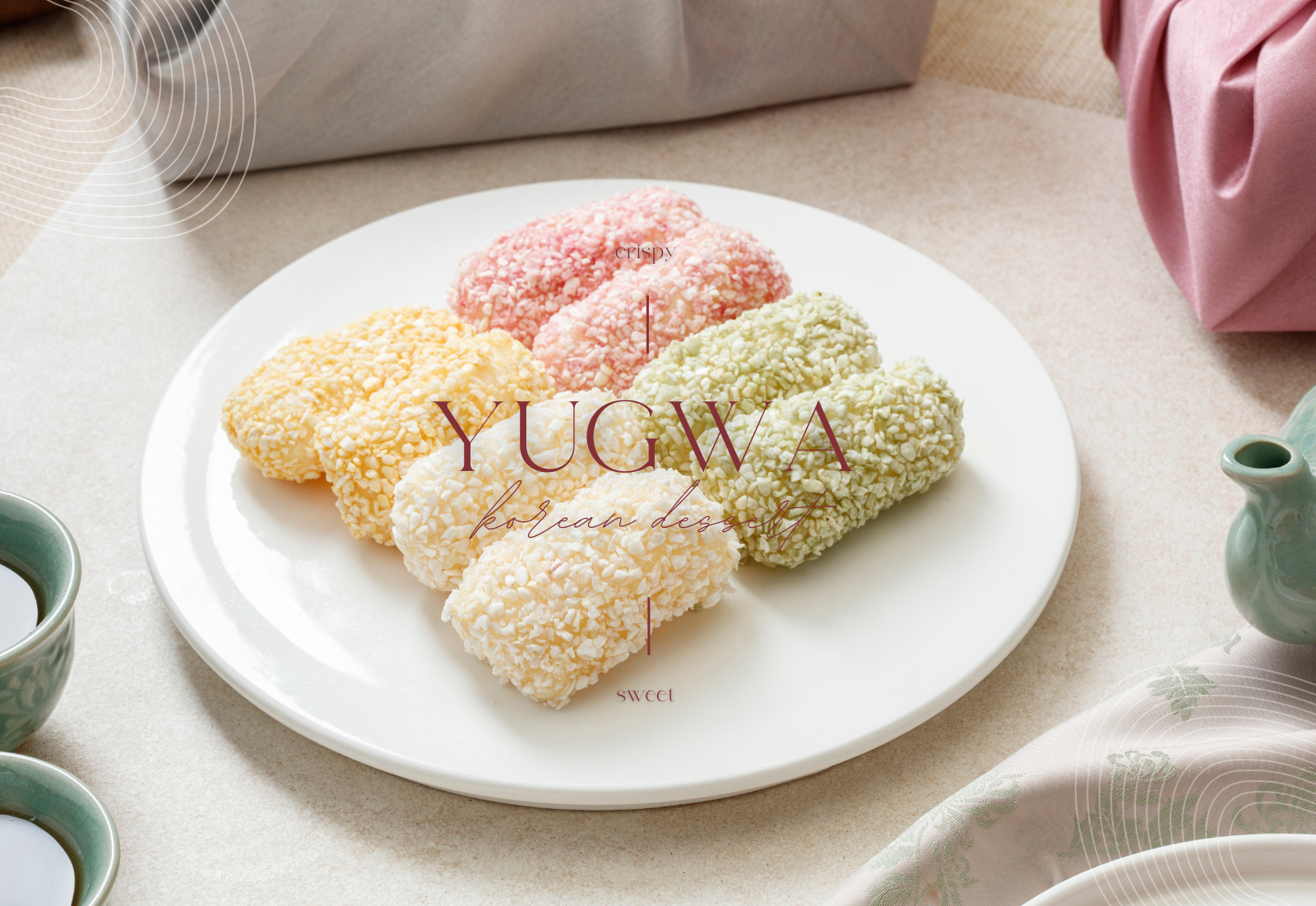
Yugwa is a traditional Korean confection that has been enjoyed with tea since the Goryeo Dynasty. It features a unique texture with a crispy exterior and a soft, chewy interior. When you take a bite, the thin, crispy shell breaks apart, and the sweet syrup inside melts like caramel in your mouth. The interior has a silky texture that creates a distinctive "siss-siss" sound when chewed, adding to its unique experience.
Yukwa was a popular snack among the Mongols during the Goryeo period, who praised it as "tasting like eating clouds," highlighting its light and delicate texture. Additionally, during the Joseon Dynasty, the story of Inspector Park Mun-su eating sweet rice yukwa packed by his mother and then succeeding in passing the state exams after praying at a temple is well-known.
To fully appreciate the delicate flavors of yukwa, it is best enjoyed with a subtle tea rather than coffee or other beverages.
2. Yakgwa
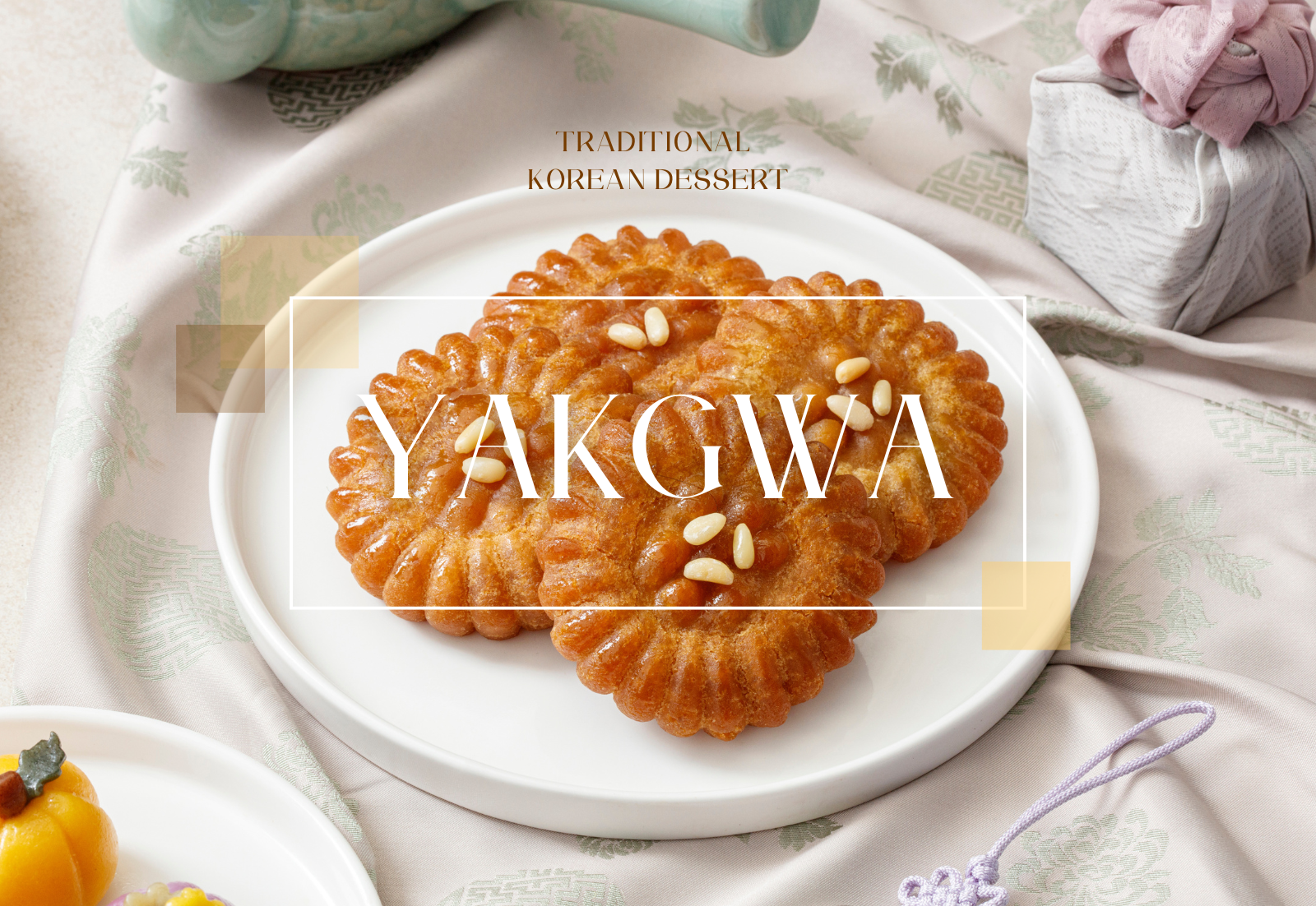
Yakgwa, often called the "Korean macaron" due to its chewy texture and traditional Korean patterns, is a traditional Korean dessert. Historically, oil and honey were so precious that they were used as medicine, which is why the term "yak" (medicine) is part of its name. Yakgwa is made by frying a flour dough and then soaking it in honey and ginger syrup. The delightful aroma of ginger and honey fills the mouth when eaten, and the flavor is especially enhanced when enjoyed with tea.
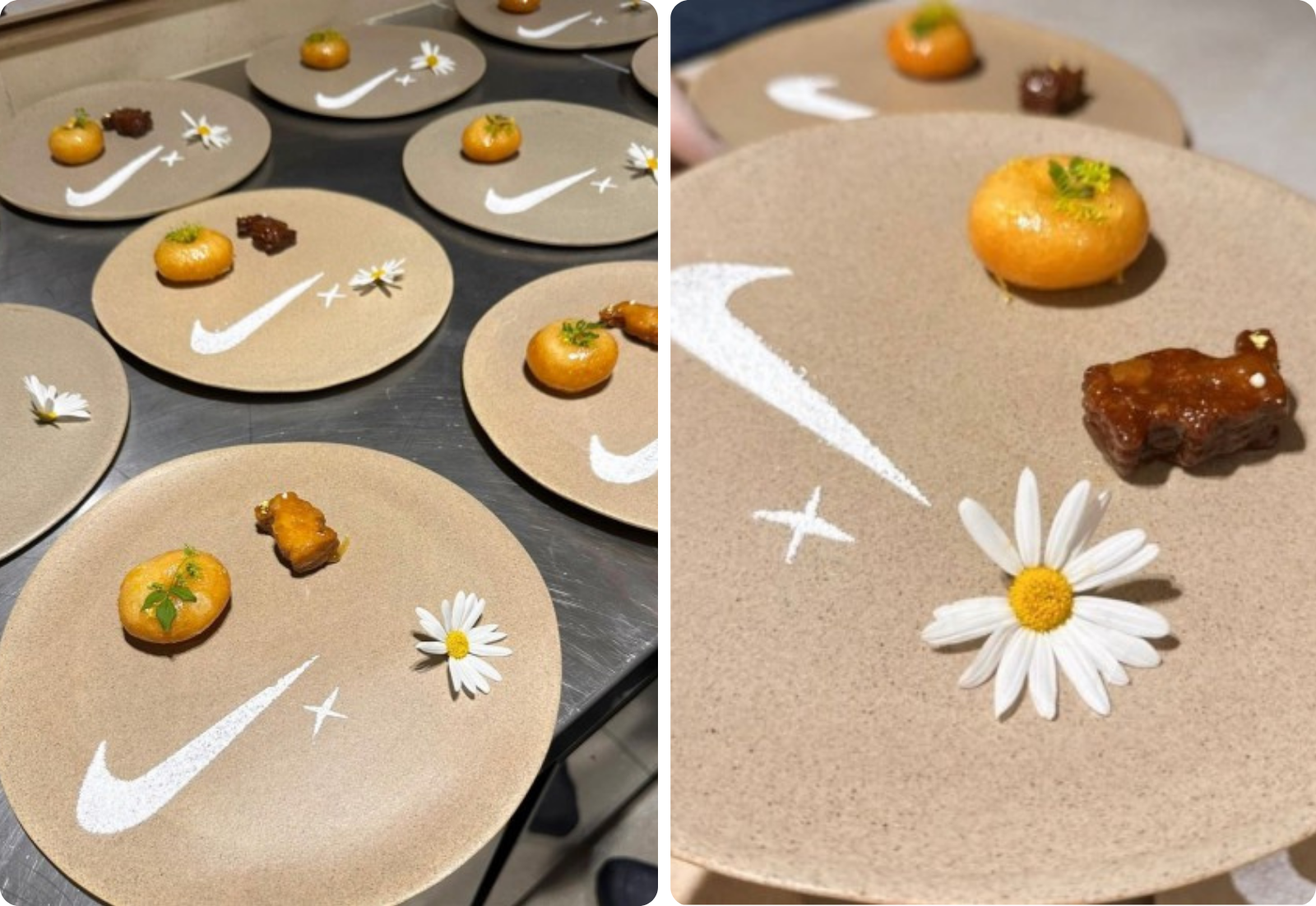
Dutch model Lauren de Graaf posted pictures of herself eating yakgwa on her social media, and it also appeared on the menu at a fashion party hosted by Big Bang’s G-Dragon, creating a buzz among celebrities on social media. Recently, yakgwa has become so popular among tourists visiting Korea that it has made it onto the "must-buy shopping list," and its sweet taste is highly recommended to try.
3. Gangjeong
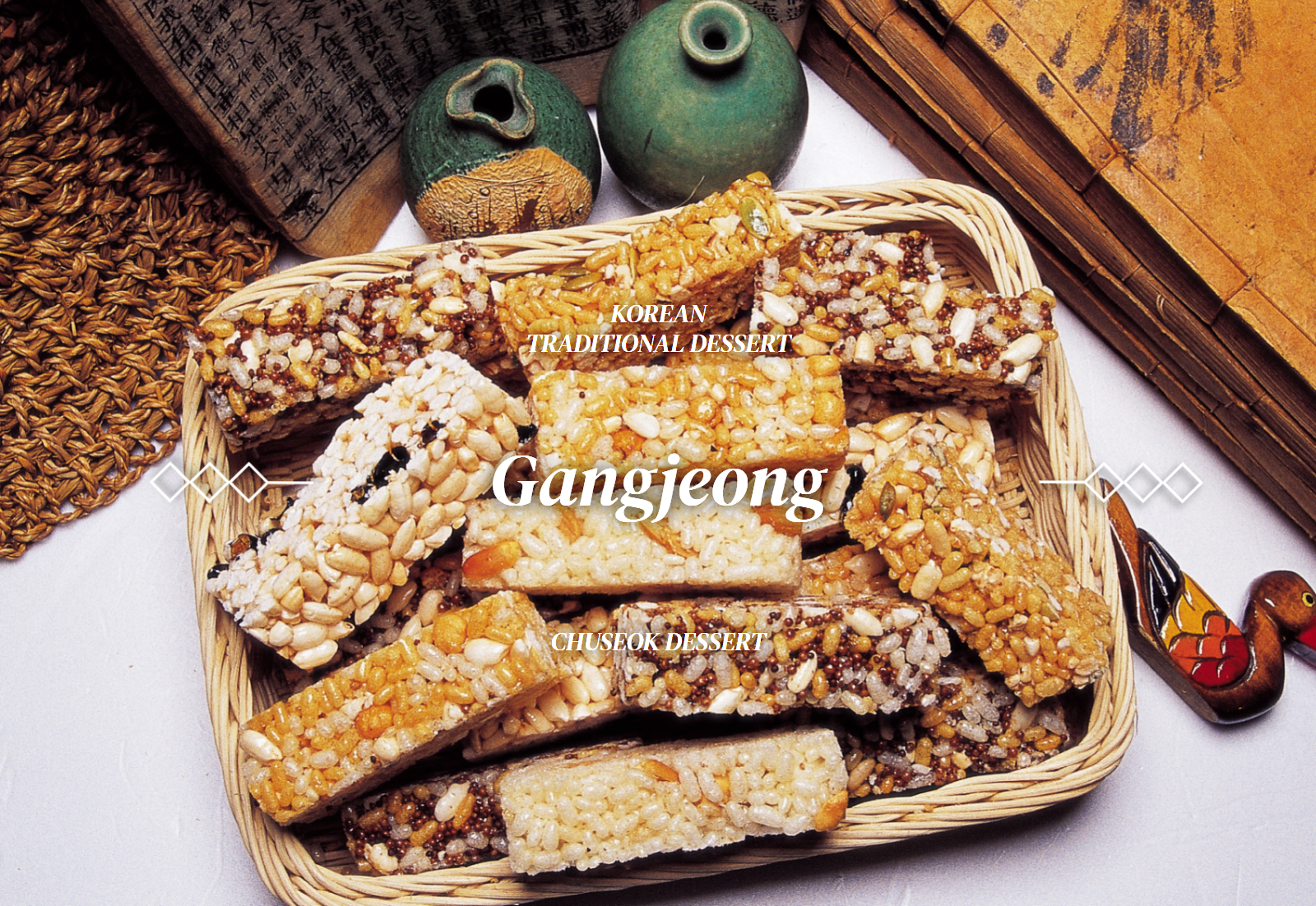
Gangjeong is a crispy and sweet Korean snack made by frying rice, then coating it with honey or sweet syrup, and adding crunchy nuts or grains. Foreigners might understand it better if described as a "Korean-style crispy bar" or an "energy bar without chocolate."
Gangjeong is a traditional Korean dessert with a long history, enjoyed in the Joseon Dynasty by the royal court and noble families. More than just a snack, it traditionally symbolized gratitude and blessings, shared with family and neighbors during holidays or special events. Particularly during Chuseok, it is used as an important offering on the ceremonial table to show thanks for ancestors' blessings.
For foreigners looking to experience the addictive taste of a dessert that embodies the diverse flavors of Chuseok, Gangjeong is highly recommended.
4. 다식
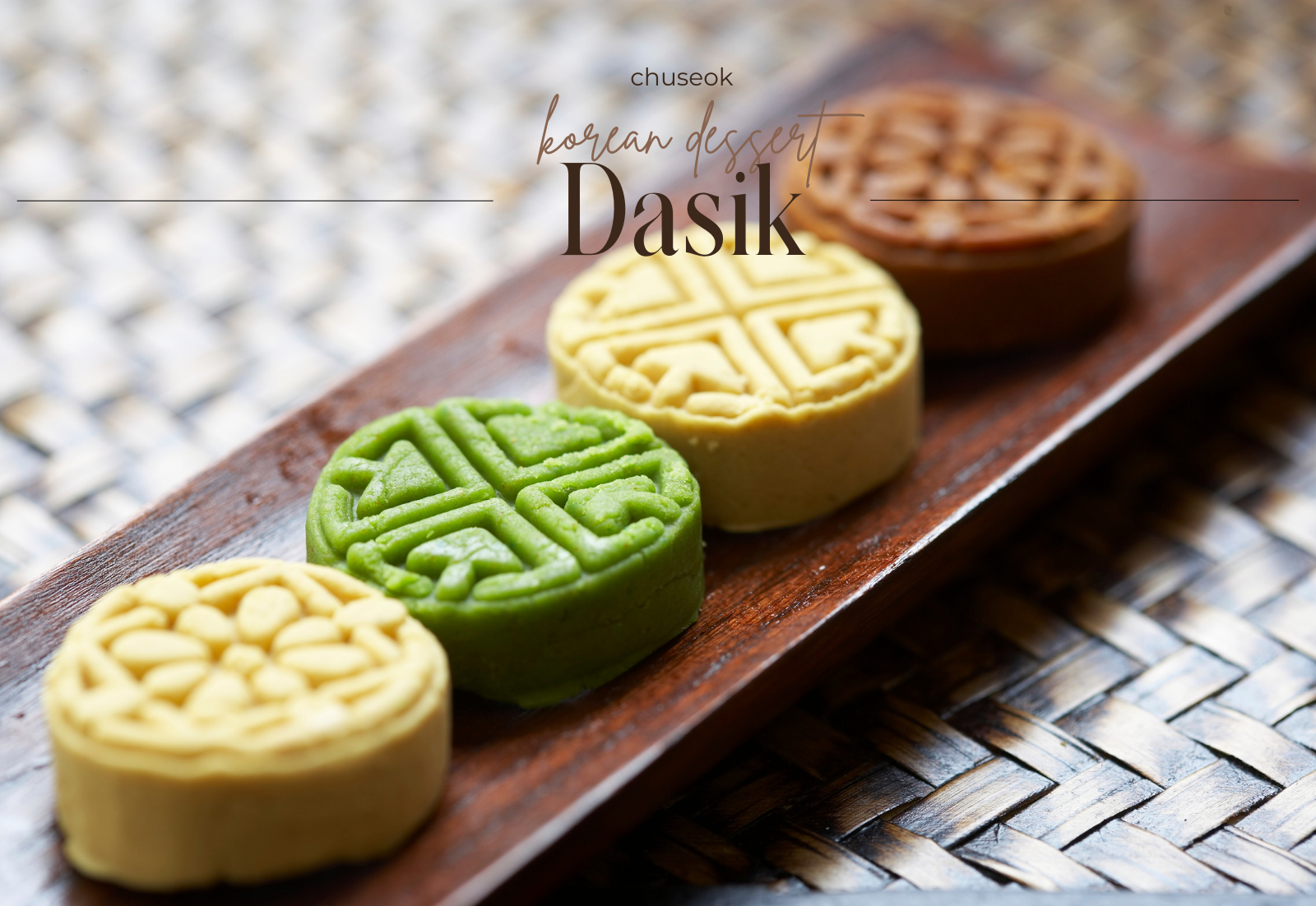
Dasik is a traditional Korean confection that originated alongside tea culture, as suggested by its name. It is made from powdered ingredients such as rice, sesame seeds, and chestnuts, or from honey mixed with pine pollen, which is then shaped using a traditional mold called a dasik pan. Dasik is characterized by its intricate patterns, reflecting traditional designs. It is known by various names depending on the main ingredients and colors, such as Obangsaek Dasik (five-color dasik), Songhwa Dasik (pine pollen dasik), Kong Dasik (bean dasik), and Heukimja Dasik (black sesame dasik).
During the Goryeo Dynasty, it was customary to offer dasik before presenting alcohol and food at Buddhist ceremonies like the Palgwanhoe. Kings also bestowed dasik as gifts to their officials.
As a representative traditional Korean snack embodying the concept of "beauty yet to be realized" (美味), dasik continues to be enjoyed not only in traditional tea ceremonies but also on modern snack tables, preserving its cultural value. When paired with green tea, the sweet dasik enhances the subtle aroma of the tea, creating a unique flavor experience. Foreigners wanting to fully experience Chuseok should definitely try dasik with its beautiful traditional patterns.
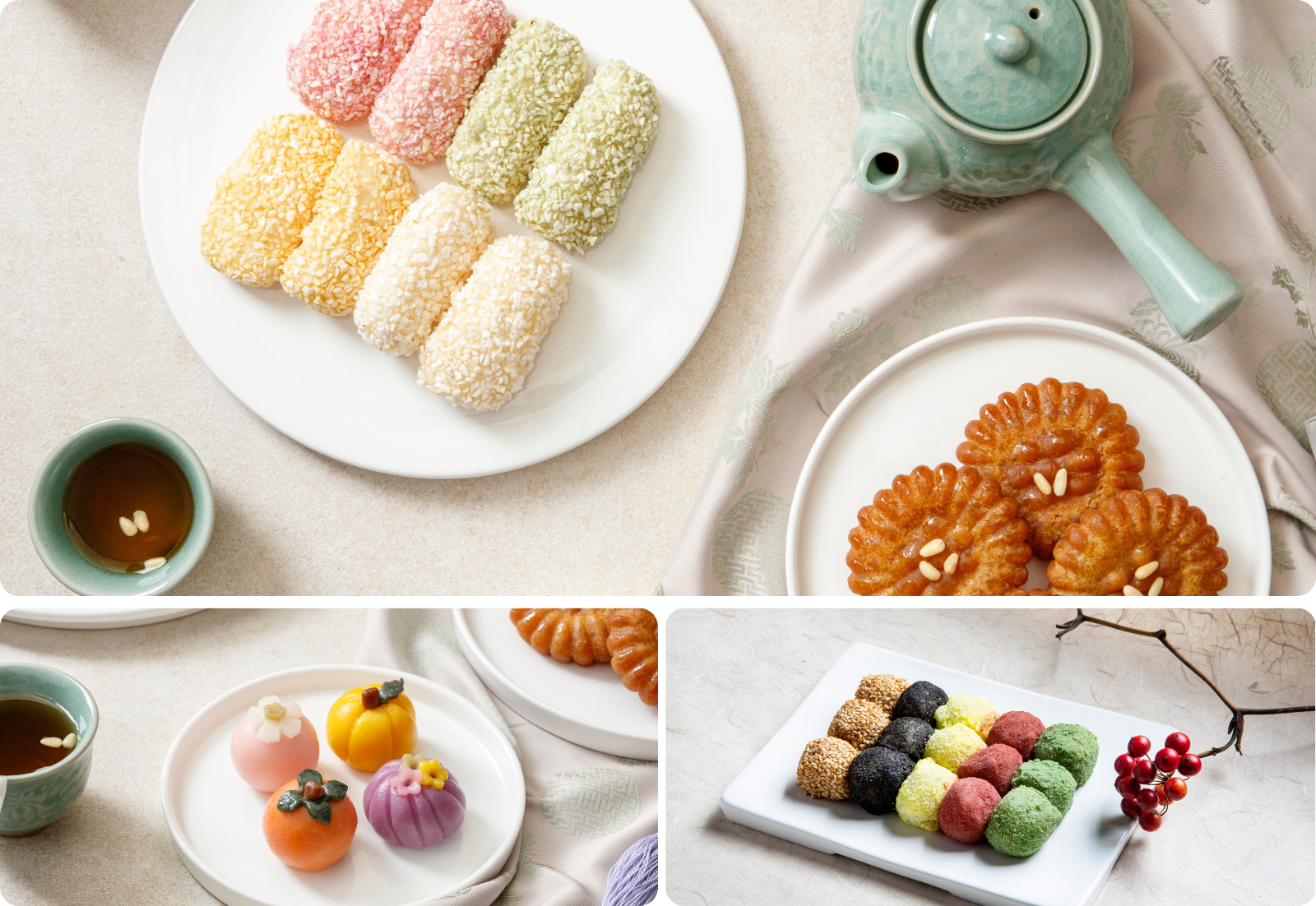
Korean traditional desserts offer unique flavors and textures that enhance the traditional atmosphere of Chuseok. Visually appealing and with a pleasantly sweet taste, these desserts are sure to captivate people of all ages, including foreigners. For a truly immersive experience of Korea’s warm holiday spirit during Chuseok, these essential traditional desserts are highly recommended.

Yugwa is a traditional Korean confection that has been enjoyed with tea since the Goryeo Dynasty. It features a unique texture with a crispy exterior and a soft, chewy interior. When you take a bite, the thin, crispy shell breaks apart, and the sweet syrup inside melts like caramel in your mouth. The interior has a silky texture that creates a distinctive "siss-siss" sound when chewed, adding to its unique experience.
Yukwa was a popular snack among the Mongols during the Goryeo period, who praised it as "tasting like eating clouds," highlighting its light and delicate texture. Additionally, during the Joseon Dynasty, the story of Inspector Park Mun-su eating sweet rice yukwa packed by his mother and then succeeding in passing the state exams after praying at a temple is well-known.
To fully appreciate the delicate flavors of yukwa, it is best enjoyed with a subtle tea rather than coffee or other beverages.
2. Yakgwa

Yakgwa, often called the "Korean macaron" due to its chewy texture and traditional Korean patterns, is a traditional Korean dessert. Historically, oil and honey were so precious that they were used as medicine, which is why the term "yak" (medicine) is part of its name. Yakgwa is made by frying a flour dough and then soaking it in honey and ginger syrup. The delightful aroma of ginger and honey fills the mouth when eaten, and the flavor is especially enhanced when enjoyed with tea.

Premium Brand Yakgwa Featured at G-Dragon’s Nike Event Snack Table ⓒ양지우
Dutch model Lauren de Graaf posted pictures of herself eating yakgwa on her social media, and it also appeared on the menu at a fashion party hosted by Big Bang’s G-Dragon, creating a buzz among celebrities on social media. Recently, yakgwa has become so popular among tourists visiting Korea that it has made it onto the "must-buy shopping list," and its sweet taste is highly recommended to try.
3. Gangjeong

Gangjeong is a crispy and sweet Korean snack made by frying rice, then coating it with honey or sweet syrup, and adding crunchy nuts or grains. Foreigners might understand it better if described as a "Korean-style crispy bar" or an "energy bar without chocolate."
Gangjeong is a traditional Korean dessert with a long history, enjoyed in the Joseon Dynasty by the royal court and noble families. More than just a snack, it traditionally symbolized gratitude and blessings, shared with family and neighbors during holidays or special events. Particularly during Chuseok, it is used as an important offering on the ceremonial table to show thanks for ancestors' blessings.
For foreigners looking to experience the addictive taste of a dessert that embodies the diverse flavors of Chuseok, Gangjeong is highly recommended.
4. 다식

Dasik is a traditional Korean confection that originated alongside tea culture, as suggested by its name. It is made from powdered ingredients such as rice, sesame seeds, and chestnuts, or from honey mixed with pine pollen, which is then shaped using a traditional mold called a dasik pan. Dasik is characterized by its intricate patterns, reflecting traditional designs. It is known by various names depending on the main ingredients and colors, such as Obangsaek Dasik (five-color dasik), Songhwa Dasik (pine pollen dasik), Kong Dasik (bean dasik), and Heukimja Dasik (black sesame dasik).
During the Goryeo Dynasty, it was customary to offer dasik before presenting alcohol and food at Buddhist ceremonies like the Palgwanhoe. Kings also bestowed dasik as gifts to their officials.
As a representative traditional Korean snack embodying the concept of "beauty yet to be realized" (美味), dasik continues to be enjoyed not only in traditional tea ceremonies but also on modern snack tables, preserving its cultural value. When paired with green tea, the sweet dasik enhances the subtle aroma of the tea, creating a unique flavor experience. Foreigners wanting to fully experience Chuseok should definitely try dasik with its beautiful traditional patterns.

Korean traditional desserts offer unique flavors and textures that enhance the traditional atmosphere of Chuseok. Visually appealing and with a pleasantly sweet taste, these desserts are sure to captivate people of all ages, including foreigners. For a truly immersive experience of Korea’s warm holiday spirit during Chuseok, these essential traditional desserts are highly recommended.
Real-time comments 0
Write a comment

